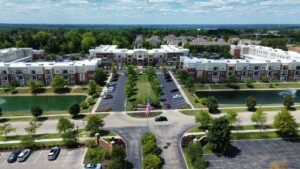
- The average furnace lifespan is 15–20 years, depending on maintenance and usage.
- Declining energy efficiency and rising bills signal it’s time for a replacement.
- Uneven heating and temperature fluctuations indicate an aging furnace.
- Check for rust, strange noises, or a faulty furnace register as warning signs.
Your furnace works hard year after year to keep your home warm, but like any appliance, it won’t last forever. If you’ve started noticing higher energy bills, frequent repairs, or uneven heating, it might be time to consider whether your furnace is nearing the end of its furnace lifespan.
The big question homeowners ask is: How often does a furnace actually need to be replaced? The answer depends on factors like system age, maintenance history, and performance issues. Let’s take a closer look at how long furnaces typically last, warning signs that it’s time for an upgrade, and how a new system can improve your home’s energy efficiency.
How Long Does a Furnace Typically Last?
The average furnace lifespan ranges between 15 to 20 years, but this can vary based on:
- Maintenance: Annual tune-ups extend a furnace’s life by preventing excessive wear and tear.
- Usage: A furnace that runs constantly during long winters will wear out faster than one in a milder climate.
- Quality of Installation: A properly installed system will function more efficiently and last longer.
- Type of Furnace: Gas furnaces tend to last around 15-20 years, while electric furnaces can sometimes reach 25-30 years with proper care.
If your furnace is approaching (or has surpassed) the 15-year mark, it’s wise to start planning for a replacement before an unexpected breakdown leaves you in the cold.
Warning Signs Your Furnace Needs to Be Replaced
Even if your furnace is still running, there are several signs that indicate it may be time to upgrade. Here’s what to watch for:
1. Rising Energy Bills
An aging furnace loses energy efficiency, meaning it must work harder to produce the same amount of heat. If your utility bills keep climbing despite regular maintenance, your system could be nearing the end of its furnace lifespan.
2. Frequent Repairs
If you’ve had multiple furnace repair calls in the past couple of years, the cost of repairs could be adding up to what you’d spend on a new system. A good rule of thumb: If a repair costs more than half the price of a replacement, investing in a new furnace is often the smarter choice.
3. Uneven Heating and Temperature Fluctuations
Does your home feel warm in one room but chilly in another? Aging furnaces struggle to distribute heat evenly, leading to temperature fluctuations throughout your home. If adjusting your thermostat doesn’t solve the issue, your system may no longer be functioning efficiently.
4. Strange Noises or Odors
Loud rattling, banging, or screeching noises can signal worn-out parts or internal damage. Additionally, persistent musty or burning smells can indicate electrical issues, gas leaks, or excessive dust buildup inside the unit.
5. Visible Rust or Cracks
Check around the furnace for signs of rust, cracks, or corrosion. If you notice deterioration near the furnace register—the vent where warm air enters a room—this could indicate excess moisture or improper airflow, both of which can lead to system failure.
6. Yellow Burner Flame Instead of Blue
A furnace’s burner flame should burn bright blue. If it’s yellow or flickering, this could indicate improper combustion, potentially leading to dangerous carbon monoxide leaks. If you notice this, turn off your furnace and call a professional immediately.
Benefits of Replacing Your Old Furnace
Upgrading to a new furnace isn’t just about preventing breakdowns—it’s also an investment in energy efficiency, home comfort, and safety. Here’s how a modern system can make a difference:
Lower Energy Bills: New furnaces are significantly more efficient than older models, using less energy to produce the same amount of heat. Look for high AFUE (Annual Fuel Utilization Efficiency) ratings—a furnace with a 95% AFUE converts 95% of its fuel into heat, wasting very little energy.
Consistent Comfort: Newer furnaces eliminate temperature fluctuations, ensuring steady, even heating throughout your home. Many models also include advanced features like variable-speed blowers that adjust airflow for optimal comfort.
Fewer Repairs and Maintenance Costs: If your current furnace requires frequent service, replacing it with a new model means fewer breakdowns and lower maintenance expenses. A new system also comes with a manufacturer’s warranty, providing peace of mind.
Better Indoor Air Quality: Older furnaces accumulate dust, debris, and even mold over time, circulating pollutants throughout your home. A modern furnace improves air quality with better filtration and ventilation, helping reduce allergens and airborne contaminants.
Increased Home Value: If you’re planning to sell your home, a brand-new, energy-efficient furnace can be a strong selling point. Buyers are more likely to choose a home with updated HVAC systems, knowing they won’t have to worry about costly replacements anytime soon.
When Is the Best Time to Replace a Furnace?
The best time to replace a furnace is before it fails. Waiting until your system stops working in the middle of winter can leave you scrambling for a solution—and possibly paying premium rates for emergency service.
Consider planning a furnace replacement in the off-season (spring or early fall) when HVAC professionals are less busy and may offer better pricing options. Not sure if your furnace is due for a replacement? The experts at CJS Heating and Air can assess your system’s condition and recommend the best solution based on your home’s needs.
In some cases, home insurance policies may help cover certain HVAC-related issues, so it’s worth reviewing your coverage during a replacement decision. If your furnace is nearing the end of its furnace lifespan, don’t wait for a costly breakdown. Upgrade to a high-efficiency model and enjoy lower energy bills, improved comfort, and peace of mind. Schedule your furnace replacement service today!





